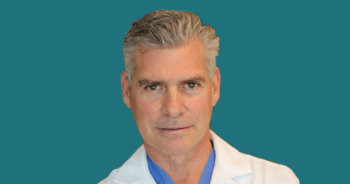
Oncology Nurses Must Watch for CAR T-Cell Therapy Side Effects
It is increasingly important that nurses recognize cytokine release syndrome and other side effects that can be triggered by treatment with engineered CAR T-cell therapies.
It is increasingly important that oncology nurses and other healthcare providers recognize cytokine release syndrome (CRS) and other side effects that can be triggered by anticancer treatment with engineered chimeric antigen receptor (CAR) T-cell therapies, and that they understand the importance of early detection, a speaker emphasized at the Oncology Nursing Society (ONS) 42nd Annual Congress, held May 4–7 in Denver.
“Careful monitoring is essential for early detection of CAR T-cell side effects,” said study coauthor Brenna Hansen, BSN, RN, OCN, a research nurse specialist at the Center for Cancer Research, National Cancer Institute, Bethesda, Maryland. “Early recognition of symptoms results in early intervention and safe management of the patient by the multidisciplinary team.”
CAR T-cell therapy involves equipping immune T cells with engineered receptors to facilitate immune attack on tumor cells expressing specific surface proteins. Patient T cells are collected and modified in a lab to express cancer-specific receptors. These are then infused back into the patient.
CAR T-cell therapies show promise against hematologic malignancies and other cancers but can trigger a range of initially subtle but potentially life-threatening side effects. Perhaps chief among these adverse reactions is CRS and neurologic side effects that might or might not occur with CRS. Most of these are reversible with corticosteroids or other treatment.
CRS symptoms include fever, tachycardia, and hypotension occurring within a week (typically 4–7 days) after CAR T-cell infusion, though CRS can occur more quickly. “I’ve seen CRS as soon as a day after infusion,” Hansen cautioned.
Heart arrhythmias, fatigue, hypoxia, pulmonary edema, pneumonitis, electrolyte imbalances, nausea, vomiting, diarrhea, cytopenias, infections, elevated creatinine kinase, myalgia, and muscle weakness can all be signs of CRS.
Neurologic side effects can include tremors, headaches, confusion, loss of balance, trouble speaking, encephalopathy, seizures, long periods of somnolence, and sometimes, hallucinations, Hansen noted.
These symptoms can be subtle initially. Hansen described a CAR T-cell therapy patient’s transportation by ambulance to the hospital after detection of a subtle hand tremor because clinicians were concerned it could quickly worsen.
CAR T-cell therapies can also trigger receptor/cell-type specific side effects such as CAR19-associated B-cell aplasia and graft-vs-host disease. New side effects will likely emerge as new targets are found and CAR T-cell therapies become more commonly administered, she predicted.
Nurses play key roles in every stage of CAR T-cell toxicity monitoring and management, from inpatient monitoring at the bedside, including frequent assessments and checks of vital signs during high-risk periods, to outpatient and long-term monitoring, Hansen said.
Outpatient monitoring for patients who are infused as outpatients, or post-discharge, is key to spotting delayed toxicities, she emphasized. Clinic and triage nurses play key roles in the timely recognition of late CAR T-cell side effects.
Long-term monitoring is important, as well. Home oncology clinic nurses should monitor serum IgG (IVIG) and blood cell counts with differential.
“If symptoms become severe, cells may be tempered with tocilizumab or corticosteroids,” she said. “However, this is avoided if possible to prevent damaging the anti-malignancy effects of the CAR T cells.”
It is crucial that nursing staff be educated on side effects unique to CAR T-cell treatments, and that nursing guidance be provided specifying the signs and symptoms that should be communicated to patients’ other healthcare providers-and patients themselves-to allow early detection and intervention. “Having a written plan can help prevent confusion and provide clear guidelines for the patient’s care,” she noted.
Newsletter
Stay at the forefront of cutting-edge science with CGT—your direct line to expert insights, breakthrough data, and real-time coverage of the latest advancements in cell and gene therapy.











































